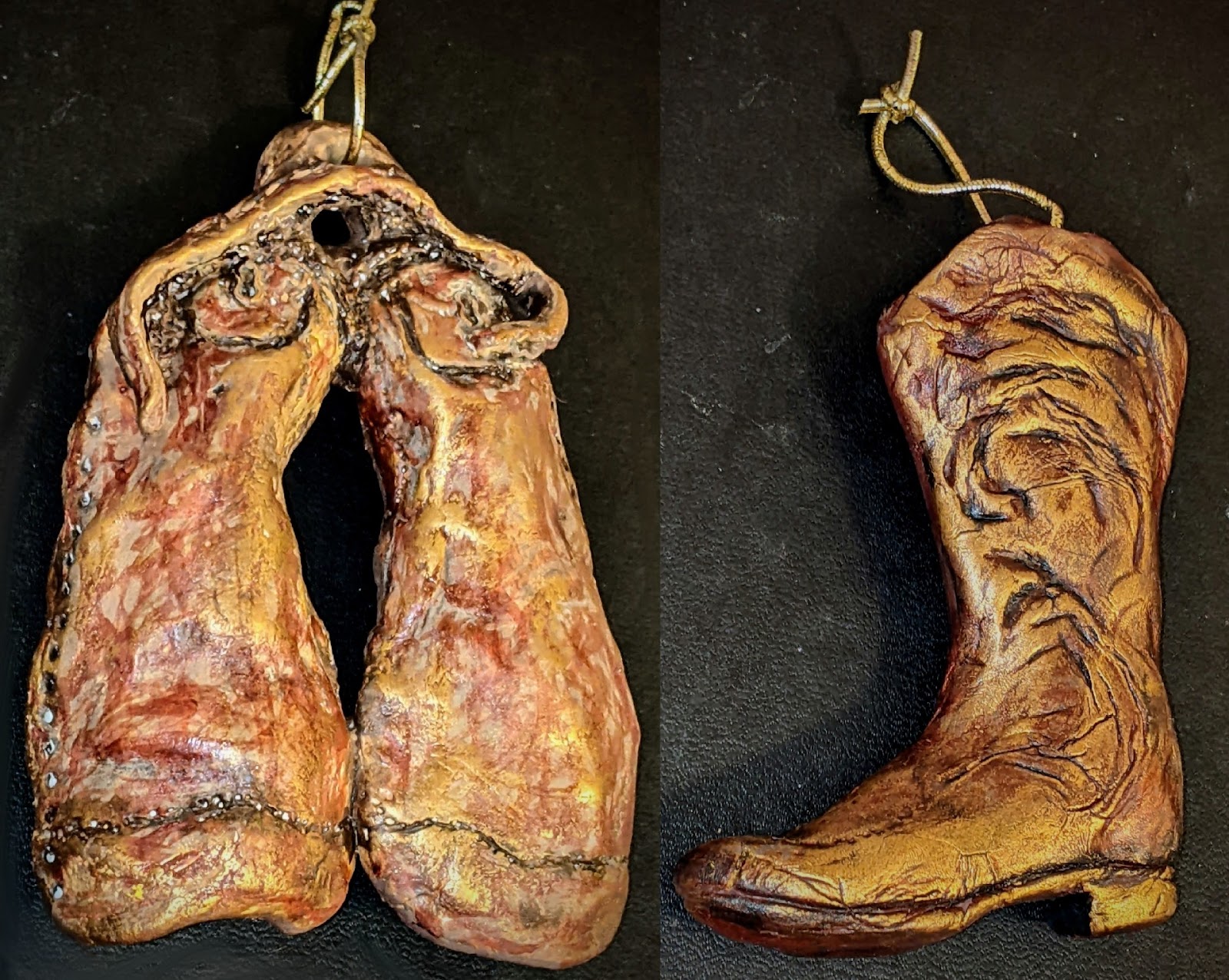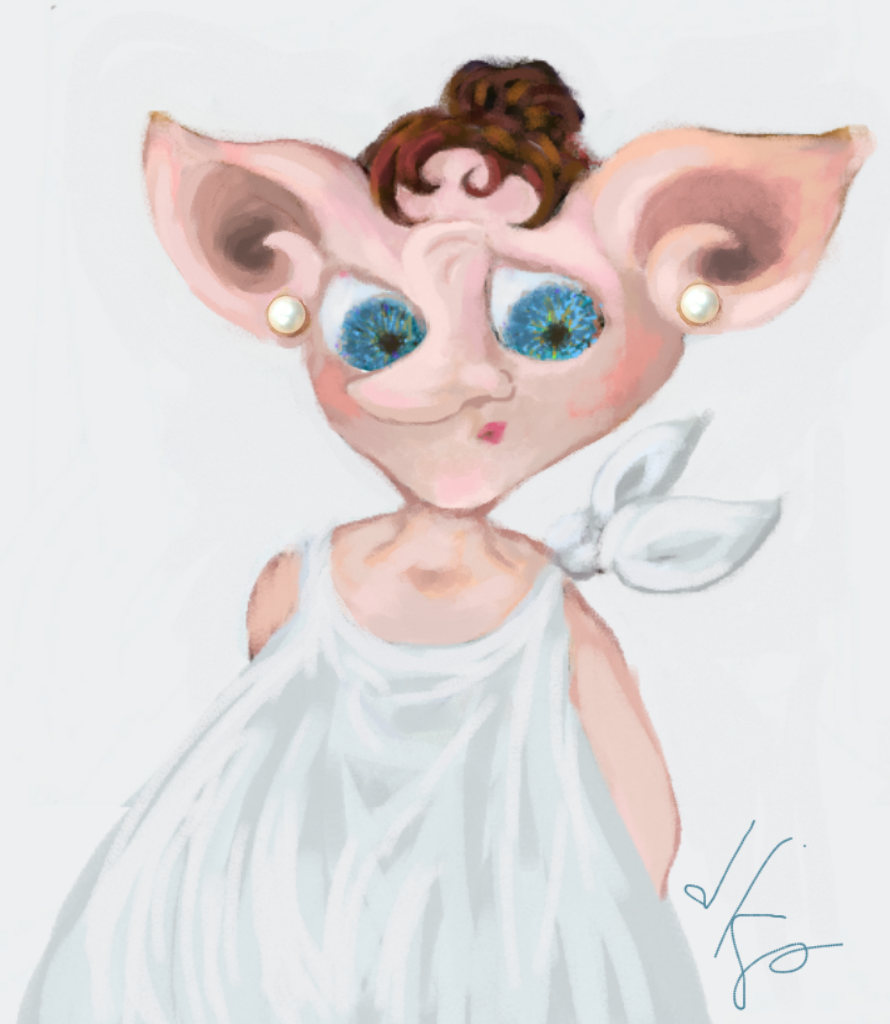Paris Café Mural: How I Did It
 |
| Paris Café Mural by D.K. Pritchett |
The Paris Café Mural: How I did It...
For artists who may have to paint a prop or quick mural of their own, here's my game plan...
The surface for the mural was a set of three 8' x 4' primed plywood panels (approximate size), bolted together to make one 8' x 12' panel. Technically, it only had to last for a night (though it has since been installed as a wall), so I didn't worry much about paint. We used leftover cans of acrylic semi-gloss latex, mixed with various craft and artists' acrylics (small bottles of Americana and FolkArt colors, and tubes of Liquitex mars and ivory black ~ what I happened to have on hand). When I opened one old paint can, it turned out to be a mystery blue ~ dark teal instead of the red I expected. We had to buy a pint of red.
I had photos of cafés, but altered the details as needed. I also searched for photos of antique French lanterns, and found some nice ones: both for sale, and in a photo of a French scene. I used MS Paint to cut and paste the lanterns to see how they'd look. I always need photos of such mundane things as shutters, trim, wine bottles ~ nearly any object ~ to use as models in getting the details right (shadows on a shutter, shapes of different types of bread and cheese, etcetera).
Drawing the storefront was hard. It was a life-sized space full of squares, rectangles, and straight lines. It didn't have to be perfect, but couldn't be too obviously crooked and lopsided. I had no level, but had a nice wooden T-square, an aluminum yardstick, my trusty old cork-backed, 24-inch stainless steel ruler, and a strange contraption that I found lying around in the craft room: a two-by-four full of pegs for hanging stuff. That piece was just about right as a straight edge for sizing the storefront's trim. I had to make quite a few adjustments and improvisations in the details of the storefront to fit our panels. After I sketched in the store, I did a quick gesture (for size) of the still life in each window. I didn't have a model, per se, but I did have several photos of pitchers, fruit, bread, and wine bottles to give me an idea.
Dave had primed the panels with tan. It actually worked as a good, neutral underpainting, to tie the color theme together. I wanted a toned-down, antique look. I also wanted the red to have an antique look, and was afraid that would be difficult. I knew that dry-brushing was the key, but it's easier said than done.
I can't remember the exact order that I used to paint the mural, but I do know that I put off that red until almost the end. I was worried about how to tone it down and keep the edges looking worn, antique. I think I started on the windows, hinting at the café tables, bread, and wine. I used a liberal amount of the same tan as the background, mixing in dark greenish-blue from the mystery can of latex, FolkArt's "true blue" color, and Liquitex's ivory black tube color, thinned. I used various off-whites and creams to lighten it, instead of a stark white. That helped keep those nice, muted tones.
The tan and some of the dark colors did tend to dry much darker. Acrylics tend to do that, and it's always a bit of a problem when making corrections and touch-ups. Corrections to the still life dried shockingly dark. I had to keep going back after it dried to re-do an area. I solved the problem by making the correction, then (while the patches were still wet) making some large, light, sweeping brushstrokes over each color field, gradually blending the areas, to tie the tones together and keep it looking unified. I also used a blueish-tan laid in large swashes at the top of the door and windows to give the idea of "glass."
I did the large lettering next, I'm sure: a fearful task, but I decided to get that bugbear out of the way. It wasn't much of a problem. I painted the letters, then painted the background black around them. The lettering is a little crooked, but in keeping with semi-professional stage props everywhere, I think. The yellow was really bright! I toned it down by over-brushing it with a tan-yellow-cream mix.
I briefly considered using my mystery blue, mixed with off white, for the main color of the mural. I decided blue would be just too muted, with all the other blue in the theme. For the red, I had asked Dave to buy me a red somewhere between apple and fire-truck red, not too dark. He picked a nice, true red, maybe hinting on a cadmium-red hue. I was very comfortable with it. I mixed in some terra cotta, burnt sienna, Tuscan red, and maybe a little tan to tone it down. Any compatible reddish-brown will do.
For the under-painting, I mixed tan, yellow, and cream to get a nice, aged-wood look. I didn't try to keep it too consistent in color, but let it be a little tan here, a little gold or cream there. I brushed it on liberally, then used a combination of dry-brush, scumbling, and pouncing ~ leaving a good bit of the antique-gold color exposed. I took the same true red, then, and mixed in a bit of the blue/teal, a bit of black, maybe a bit of the Tuscan red, till I had a good shadow color. I used it to accent all the areas of trim opposite the cream/tan edges, to make them look recessed. I just mix by eye ~ there's no formula, other than knowing your general color-wheel rules, and having your own experience and know-how of what paint will do when mixing. It helps to mix a little at a time till you know which color will dominate. (If color mixing is a big problem for you, Liquitex's color-mixing chart might be of help. I used it a great deal while learning acrylics; less so, now that I'm more experienced).
The top part wasn't too hard, except that I had to stand on a stepladder and reach up to paint. I laid in loose details for the window boxes, flowers, and foliage. I mixed a nice bone color for the shutters, adding detail in slightly darker tones. For the window frames, I hit the edges with mixes of black and umber to give it depth, make the images pop. For the plain windows, I mixed my myster dark teal (kind of like Prussian blue), and maybe some true blue or Ultramarine, with a little black, raw umber, and tan. (One of my favorite color blends is Ultramarine blue and raw umber. It makes a great gray, almost like steel or gun metal. It may have universal appeal. I was mixing it once, and someone else, a non-artist, said, "Wow, that's a great color!")
I might have been brave enough to place the small window-lettering right over the still lifes, as it was on the actual cafe; but, I knew if I messed up the lettering or the coloring, I'd have to repaint a still life ~ maybe both. I wisely decided to refrain. I painted the small, curved lettering on the window of the door instead.That's a plus, because in the final photos, it would have been distracting to see lettering on both windows.
I always have a crisis of confidence when I face a big, blank wall or canvas. Can I do it? Will it look decent? Will I have to brush and re-brush till the paint gets all gloppy, or will the vision flow from my mind to the canvas with a great, confident flourish? This was about half and half. I was scared at first, but then everything began to come together. If you (artist) feel the same way, what can I say? You're not alone. This seemed like a huge wall for the little time that I had to get it done. In the end, I worked about 25 hours on it, about three-to-six hours at a go. Climbing up and down the stepladder was tiresome...


Comments
Post a Comment
Your thoughts and comments are greatly appreciated!